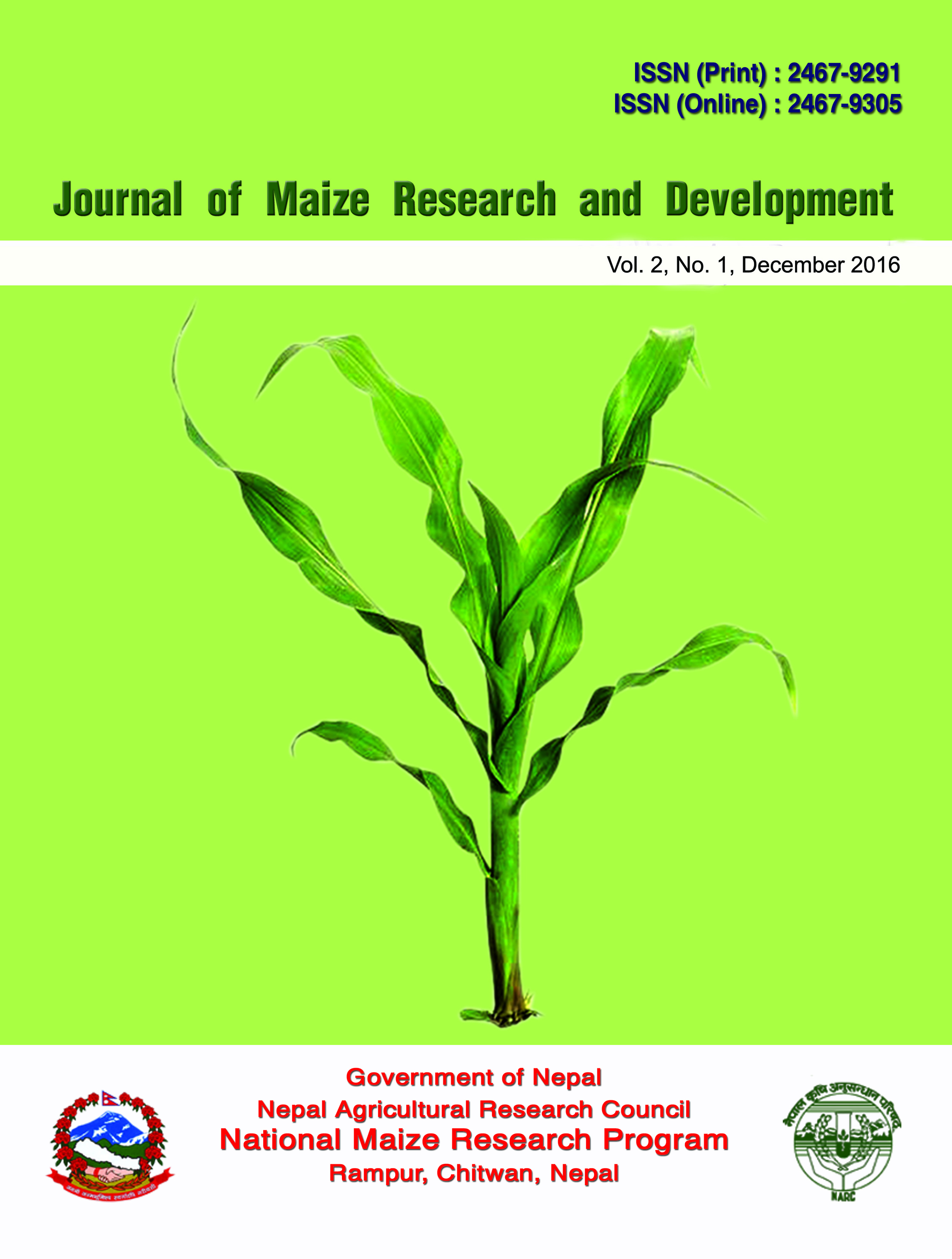Assessment of soil fertility status of Agriculture Research Station, Belachapi, Dhanusha, Nepal
DOI:
https://doi.org/10.3126/jmrd.v2i1.16214Keywords:
Nutrient management, research efficacy, soil fertility maps, and soil testingAbstract
Soil test-based fertility management is important for sustainable soil management. This study was carried out to determine the soil fertility status of the Agriculture Research Station, Belachapi, Dhanusha, Nepal. Using soil sampling auger 25 soil samples were collected randomly from a depth of 0-20 cm. Soil sampling points were identified using GPS device. Following standard methods adopted by Soil Science Division laboratory, Khumaltar, the collected soil samples were analyzed to find out their texture, pH, N, P2O5, K2O, Ca, Mg, S, B, Fe, Zn, Cu, Mn and organic matter status. The soil fertility status maps were made using Arc-GIS 10.1 software. The observed data revealed that soil was grayish brown in colour and sub-angular blocky in structure. The sand, silt and clay content were 36.03±3.66%, 50.32±2.52% and 25.42±2.25%, respectively and categorized as eight different classes of texture. The soil was acidic in pH (5.61±0.14). The available sulphur (0.73±0.09 ppm) status was very low, whereas organic matter (1.34±0.07%), available boron (0.56±0.10 ppm), available zinc (0.54±0.22 ppm) and available copper (0.30±0.01 ppm) were low in status. The extractable potassium (95.52±13.37 ppm) and extractable calcium (1264.8±92.80ppm) exhibited medium in status. In addition, available phosphorus (33.25±6.97 ppm), available magnesium (223.20±23.65 ppm) and available manganese (20.50±2.43 ppm) were high in status. Furthermore, available iron (55.80±8.89 ppm) status was very high. To improve the potentiality of crops (maize, rice, wheat etc.) for studied area, future research strategy should be made based on its soil fertility status.Downloads
Download data is not yet available.
Abstract
3447
3447
PDF
1922
1922
Downloads
Published
2016-12-23
How to Cite
Khadka, D., Lamichhane, S., Khan, S., Joshi, S., & Pant, B. B. (2016). Assessment of soil fertility status of Agriculture Research Station, Belachapi, Dhanusha, Nepal. Journal of Maize Research and Development, 2(1), 43–57. https://doi.org/10.3126/jmrd.v2i1.16214
Issue
Section
Articles




